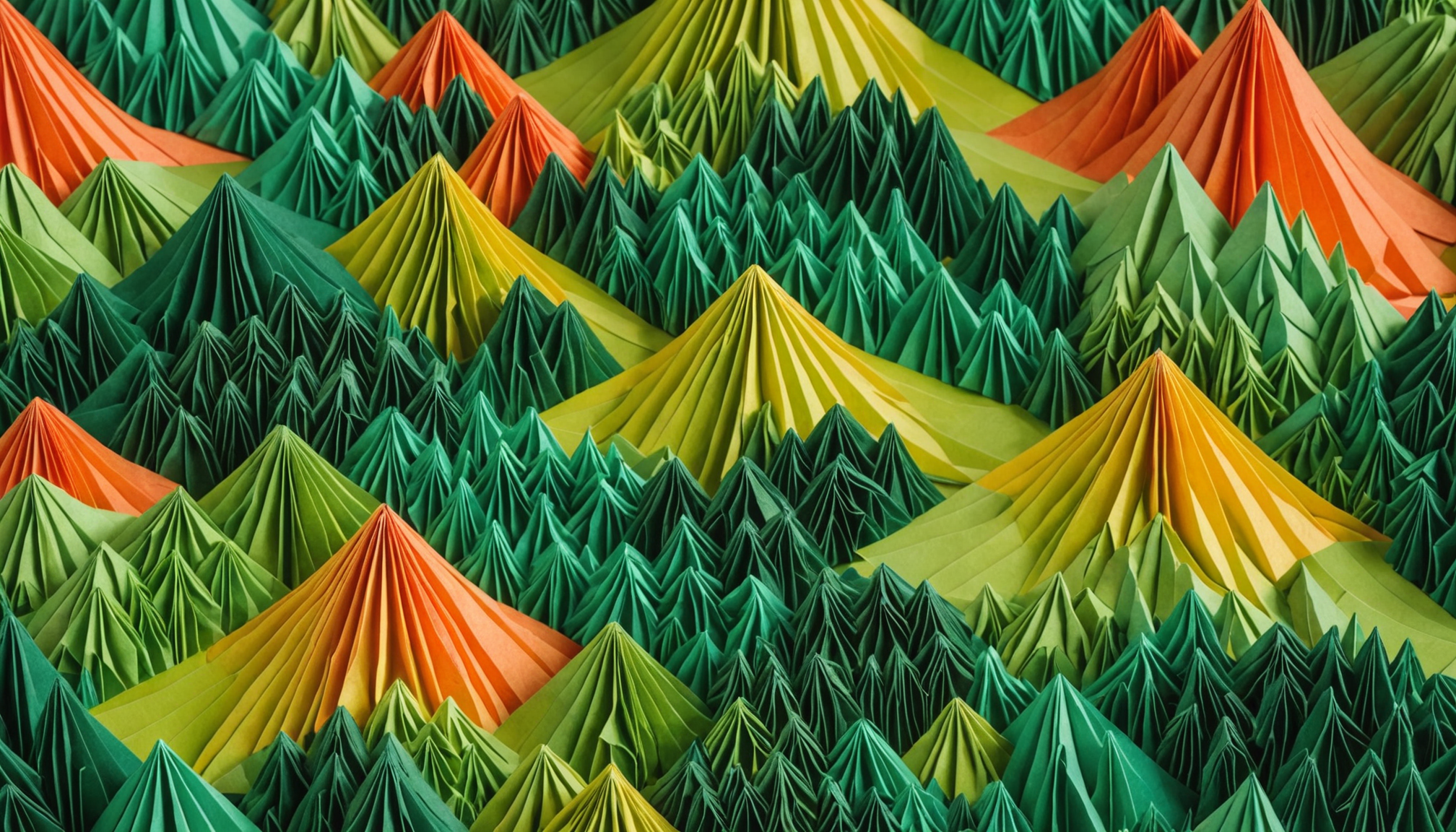
Within the scope of digital imaging, the concepts of multiband and multilayered images emerge as fascinating constructs, each carrying its own set of intricacies and applications. Multiband images, often encountered in the fields of remote sensing and scientific imaging, consist of multiple bands or channels, each representing a different spectral wavelength. This allows for a rich tapestry of information to be captured, revealing details that a single-channel image could only dream of. For instance, consider a satellite image that captures not just the visible light spectrum but extends into infrared and ultraviolet bands, enabling scientists to infer information about vegetation health, land use, and even atmospheric conditions.
On the other hand, multilayered images introduce a different layer (pun intended) of complexity. They’re composed of multiple image layers that can be manipulated independently. This structure is particularly prevalent in graphic design and photo editing, where different elements of an image—such as text, shapes, and effects—are layered to create a cohesive whole. Each layer can be modified, hidden, or deleted without affecting the underlying layers, granting artists and designers a powerful tool for creativity.
When we delve into Pillow, a beloved Python library for image processing, understanding these structures becomes essential. Pillow seamlessly handles both multiband and multilayered images, providing a versatile platform for developers to create, edit, and analyze images with ease. The elegance of Pillow lies not only in its capabilities but also in its simplicity of use, allowing one to traverse the complex landscapes of image data with just a few lines of code.
To illustrate this, let’s think how Pillow treats a multiband image. When you load an image file, such as a TIFF that contains multiple bands, you can easily access each band as if they were individual images. Here’s a snippet that demonstrates how to load a multiband image and access its bands:
from PIL import Image
# Load a multiband image
image = Image.open("multiband_image.tiff")
# Display the number of bands
print(f"Number of bands: {image.n_frames}")
# Access and show the first band
image.seek(0) # Go to the first band
image.show()
This simple example encapsulates the concept of multiband images within Pillow, showcasing how one might interact with the various channels of information encapsulated in the digital canvas. In a similar vein, multilayered images can be manipulated with Pillow by using its capabilities to handle layers like a magician deftly juggling his props.
Loading and Displaying Multiband Images
When it comes to loading and displaying multiband images, Pillow’s simpler interface belies the complexity that often underlies such tasks. The process begins by understanding the nature of the image file—multiband images may reside in formats such as TIFF or HDF5, which support multiple channels of data. Pillow, in its wisdom, abstracts much of this complexity, allowing us to interact with the bands as if they were separate entities, each containing its own unique slice of information.
Upon loading a multiband image, one can easily query the number of bands available. This can be achieved through the property n_frames, which returns the total count of bands present in the image. Each band can be accessed using the seek() method, which allows us to navigate through the available frames. This is akin to flipping through the pages of a book, where each page reveals a different aspect of the story contained within.
Ponder the following example that illustrates how to load a multiband image, display the number of bands, and visualize each band sequentially:
from PIL import Image
# Load a multiband image
image = Image.open("multiband_image.tiff")
# Display the number of bands
print(f"Number of bands: {image.n_frames}")
# Iterate through the bands and display each one
for band in range(image.n_frames):
image.seek(band) # Go to the current band
image.show(title=f"Band {band}") # Show the current band with a title
As you run this code, a series of windows will appear, each showcasing a different band of the multiband image. This not only presents the visual data but also invites the viewer to think the implications of each band—the infrared data revealing vegetation health, the visible spectrum capturing urban landscapes, and so forth. The interplay of these images becomes a dialogue, where each band converses with the others, offering insights that a singular perspective could never achieve.
Moreover, one might take the notion of multiband images a step further by applying color mapping to enhance visualization. Suppose we want to combine the information from two bands into a single RGB image, we can achieve this by using Pillow’s capabilities to manipulate pixel data. Below is a code snippet that demonstrates how to create an RGB image from two different bands:
from PIL import Image
# Load the multiband image
image = Image.open("multiband_image.tiff")
# Assume the first two bands are suitable for RGB representation
image.seek(0) # First band (Red)
band1 = image.copy()
image.seek(1) # Second band (Green)
band2 = image.copy()
# Create a new RGB image
rgb_image = Image.merge("RGB", (band1, band2, band1)) # Using band1 for both Red and Blue
# Show the combined RGB image
rgb_image.show(title="RGB Image from Bands")
This code snippet culminates in a vivid representation that melds the information from two distinct bands into a singular visual experience, enriching the narrative that the image conveys. The seamless integration of data through Pillow not only allows for practical applications but also inspires a deeper appreciation for the multifaceted nature of visual information.
Manipulating Multilayered Images with Pillow
When venturing into the realm of multilayered images, Pillow provides an intuitive interface that enables one to manipulate layers with grace and precision. Each layer within a multilayered image can be thought of as a distinct entity, bearing its own characteristics while still contributing to the overall composition. This is particularly useful in scenarios where one desires to isolate elements from a complex visual landscape—think of a painter who meticulously selects colors and forms to achieve the desired artistic expression.
To manipulate multilayered images, we first need to understand how Pillow represents these layers. Each layer can be accessed individually, allowing us to perform operations such as transformations, adjustments, or even complete replacements. Think the following example, which demonstrates how to load a multilayered image and manipulate its layers:
from PIL import Image
# Load a multilayered image
image = Image.open("multilayered_image.psd")
# Display the number of layers
print(f"Number of layers: {image.n_frames}")
# Iterate through the layers and apply a transformation to each one
for layer in range(image.n_frames):
image.seek(layer) # Navigate to the current layer
layer_image = image.copy() # Copy the current layer
# Apply a simple transformation: Rotate the layer
transformed_layer = layer_image.rotate(45) # Rotate by 45 degrees
# Show the transformed layer
transformed_layer.show(title=f"Transformed Layer {layer}")
In this snippet, we begin by loading a multilayered image—perhaps a PSD file commonly used in graphic design. By querying the number of frames with the n_frames property, we can ascertain how many layers are present. Each layer is accessed sequentially through the seek() method, allowing us to manipulate them independently. In this case, we chose to rotate each layer by 45 degrees, demonstrating the simpler nature of layer manipulation within Pillow.
Moreover, Pillow’s versatility shines through when it comes to compositing layers together. The ability to blend different layers can lead to spectacular visual outcomes, transforming a mere collection of images into a cohesive masterpiece. Let us explore how we might overlay layers to create a composite image:
from PIL import Image
# Load the base image and additional layers
base_image = Image.open("base_image.png")
overlay_image = Image.open("overlay_image.png")
# Ensure the overlay image is the same size as the base
overlay_image = overlay_image.resize(base_image.size)
# Composite the images using alpha blending
composite_image = Image.alpha_composite(base_image.convert("RGBA"), overlay_image.convert("RGBA"))
# Show the composite image
composite_image.show(title="Composite Image")
In this example, we begin with a base image and an overlay image—both of which are loaded into memory. The overlay image is resized to match the dimensions of the base image, ensuring a seamless blend. Using the alpha_composite() method, we can merge the two images, resulting in a beautifully layered composition where the properties of both images coexist harmoniously. This process evokes the artistry of layering in graphic design, where each image contributes its unique essence to the final outcome.
As we navigate through the intricacies of multilayered images, it becomes evident that Pillow stands as a powerful ally in the sphere of image manipulation. It allows one to traverse the depths of creativity, whether through the subtle rotation of layers or the bold blending of visuals, all while preserving the integrity and individuality of each element. In this dance of pixels and layers, Pillow invites us to explore, experiment, and ultimately express our artistic visions with unparalleled ease.
Applying Filters and Effects to Multiband Images
As we delve into the realm of multiband images, the application of filters and effects emerges as an exhilarating journey through the pixels, a dance of manipulation where one might enhance, augment, or entirely transform the visual narrative woven within the data. Filters serve as the brushes of this digital canvas, allowing us to accentuate certain features, smooth out imperfections, or introduce a whimsical flair to the imagery.
In Pillow, applying filters to multiband images is not merely an exercise in aesthetics; it’s an expedition into the depths of data interpretation. One can ponder of each band as a separate layer of meaning, and by applying filters, we not only alter the visual presentation but also extract richer insights from the underlying information. For instance, using a Gaussian blur filter on a specific band can smooth out noise in the data, thereby revealing more pertinent details hidden within the chaos.
Let’s ponder a practical example wherein we apply a Gaussian blur to the first band of a multiband image. This technique can be particularly useful in remote sensing applications, where one might wish to reduce noise in spectral data. The following snippet demonstrates this process:
from PIL import Image, ImageFilter
# Load a multiband image
image = Image.open("multiband_image.tiff")
# Access the first band
image.seek(0) # Navigate to the first band
band1 = image.copy()
# Apply a Gaussian blur filter
blurred_band1 = band1.filter(ImageFilter.GaussianBlur(radius=5))
# Show the original and blurred band
band1.show(title="Original Band 1")
blurred_band1.show(title="Blurred Band 1")
As we execute this code, we witness the transformation of the first band, where the sharp edges begin to soften, and the overall noise is diminished, leading to a serene interpretation of the data. This act of blurring is akin to a painter smudging the harsh lines of a sketch, allowing the viewer to focus on the essential details that emerge from the softened foreground.
However, the application of filters does not end with blurring; the spectrum of possibilities is as vast as the data itself. We can enhance contrast, apply edge detection, or even manipulate colors in creative ways. Think the application of an edge enhancement filter, which can highlight the contours and structures present within the data, revealing a different facet of the image’s story:
from PIL import Image, ImageFilter
# Load a multiband image
image = Image.open("multiband_image.tiff")
# Access the second band
image.seek(1) # Navigate to the second band
band2 = image.copy()
# Apply an edge enhancement filter
enhanced_band2 = band2.filter(ImageFilter.EDGE_ENHANCE)
# Show the original and enhanced band
band2.show(title="Original Band 2")
enhanced_band2.show(title="Enhanced Band 2")
In this illustration, the edge enhancement filter breathes life into the contours of the second band, creating a striking representation that beckons the viewer to explore the intricate details that may have otherwise gone unnoticed. This highlights the transformative power of filters—by altering the perception of the data, we can uncover layers of meaning that enrich our understanding of the image.
Moreover, we can venture into the realm of color manipulation, where filters can be applied to alter the hue and saturation of specific bands. This can be particularly effective in applications like vegetation analysis, where one might wish to emphasize certain features. For instance, let’s apply a color enhancement to the first band and visualize the results:
from PIL import Image, ImageEnhance
# Load a multiband image
image = Image.open("multiband_image.tiff")
# Access the first band
image.seek(0) # Navigate to the first band
band1 = image.copy()
# Enhance the color of the band
enhancer = ImageEnhance.Color(band1)
enhanced_band1 = enhancer.enhance(1.5) # Increase color saturation by 50%
# Show the original and enhanced band
band1.show(title="Original Band 1")
enhanced_band1.show(title="Color Enhanced Band 1")
Through this enhancement, the colors leap off the canvas, inviting the viewer to engage with the data in a more visceral manner. This manipulation not only serves aesthetic purposes but also plays an important role in data interpretation, enabling clearer distinctions among different features within the image.
As we navigate the vast landscape of filters and effects within Pillow, it becomes apparent that the journey is not just about altering pixels; it is about uncovering the narratives that lie beneath the surface of multiband images. Each filter applied is a step deeper into the intricacies of visual data, revealing insights that may otherwise remain obscured. In this delicate interplay of manipulation and interpretation, Pillow becomes an invaluable ally, empowering us to explore the myriad stories encapsulated within the multiband images we encounter.
Saving and Exporting Multilayered Images in Various Formats
When it comes to saving and exporting multilayered images, the Pillow library provides a robust framework that allows developers and artists alike to preserve their intricate creations in various formats. Just as a painter chooses the perfect canvas for their masterpiece, so too must one select the appropriate file format to ensure that the layers, colors, and effects are retained in their full glory.
Multilayered images, often residing in formats like PSD (Photoshop Document) or TIFF, require careful handling during the saving process to maintain the integrity of each layer. Pillow excels at this, which will allow you to save your multilayered images while preserving all the nuances that make them unique. The process begins with understanding the desired output format, as this will dictate how the layers are treated and whether they can be retained in their original form.
For example, when saving a multilayered image as a TIFF, you can easily retain all the layers without any loss of information. Below is a code snippet that demonstrates how to save a multilayered image in Pillow:
from PIL import Image
# Load a multilayered image
image = Image.open("multilayered_image.psd")
# Save the image as a TIFF file
image.save("exported_image.tiff", format="TIFF")
In this example, the multilayered image is opened from a PSD file and subsequently saved as a TIFF. The choice of TIFF is significant here, as it supports multiple layers and high-quality image data. This ensures that the artistic intent behind each layer remains intact, ready to be revisited or further manipulated in the future.
However, one must be aware that not all formats support multilayered images equally. For instance, while JPEG is a ubiquitous format for photographic images due to its compression capabilities, it does not support layers. Saving a multilayered image as a JPEG will flatten the layers into a single layer, which could lead to the loss of important details crafted throughout the editing process. To illustrate this, think the following snippet that attempts to save a multilayered image as a JPEG:
# Attempting to save a multilayered image as a JPEG
image.save("exported_image.jpg", format="JPEG")
Executing the above code will yield a warning or an error, signifying the incompatibility of multilayered images with the JPEG format. Thus, it is imperative to choose wisely based on the intended use of the image.
Moreover, Pillow also allows for the export of images in more specialized formats that may cater to specific applications, such as PNG for web graphics, where transparency very important. When working with multilayered images, if transparency is desired, one might opt for PNG, preserving the layers while also enabling the visual effects of transparency. Here’s how one might save a multilayered image as a PNG:
# Load a multilayered image
image = Image.open("multilayered_image.psd")
# Save the image as a PNG file
image.save("exported_image.png", format="PNG")
This code snippet illustrates the flexibility that Pillow offers, enabling us to save our layered creations in a format that aligns with our specific needs. The PNG format, with its support for transparency, allows for creative freedom, particularly in web design where layering and visibility play pivotal roles.
The process of saving and exporting multilayered images in Pillow is not merely a technical necessity; it is an important step in the artistic journey. Each format brings its own set of properties, capabilities, and limitations, and understanding these nuances allows creators to make informed decisions. With Pillow as our companion, we can navigate this landscape with confidence, ensuring that our artistic expressions are preserved for all to see, study, and appreciate.






